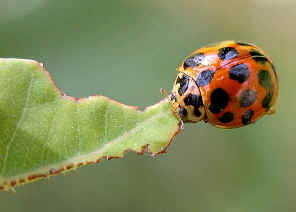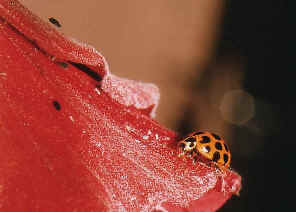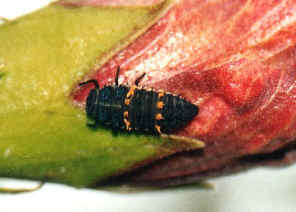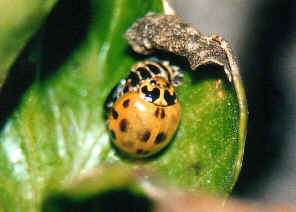Common Spotted Ladybird - Harmonia conformis
FAMILY COCCINELLIDAE
This page contains information and pictures about Common Spotted Ladybird Beetles that we found in the Brisbane area, Queensland, Australia.
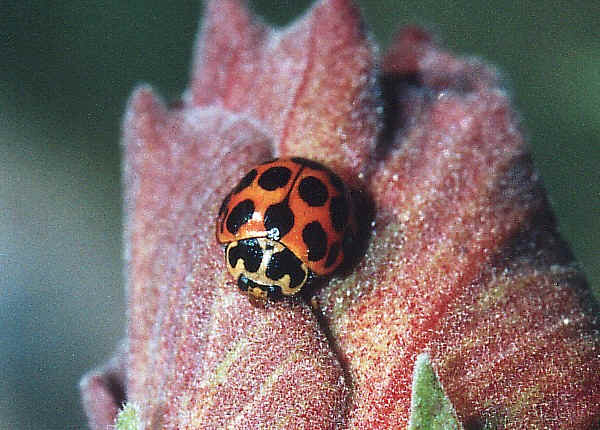
- Body length 6mm
The Common Spotted Ladybird Beetles are medium in size. They are beautifully bright orange in colour with 23 black dots on its two wing-covers. We found them in our backyards, they feed on the aphids on the hibiscus plants.
- A fully grown larva consumes about 50 aphids per day. An adult female eats more than 100 aphids before she is ready to lay eggs. A ladybird will consume at least 2400 aphids during her life-span, about one to two months.


- In the above pictures, the ladybird looks for the aphids and then catches one to eat. The aphids seem do not have any defense mechanism to against the predation. The aphids do not even seem to take any action, such as running or kicking etc.
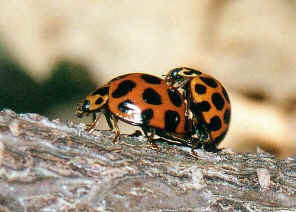
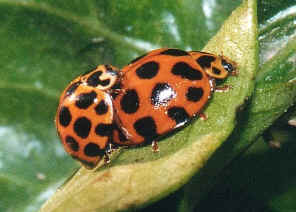
- The above pictures show two different mating pairs. Female is about the same size , or a bit larger than the male. After mating, the female lay a batch of eggs on the surface of leave.

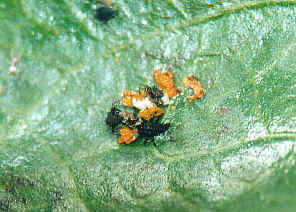
- Common Spotted Ladybird Larvae is dull black in colour. The 1st instars looks like an ant. It walks as fast as ants. The later instars has two yellow bends on the abdomen. They spend most of the time feeding on aphids.
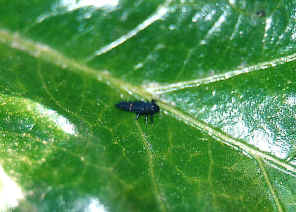
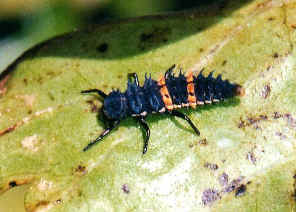
- It takes four instars stages for a ladybird larvae become fully grown and ready for pupating. Their length is up to12mm. For locomotion, beside their six legs, ladybirds larvae use their crochet for moving. Their crochet is at the tip of their abdomen, which can hold onto a surface, help them for walking from leaf to leaf. Besides, the crochet hold so that their legs are free to catch the aphids. The crochet also hold the surface when in pupation.
Both ladybird adults and larvae are predators. They feed on very small insects such as aphids, scale insects and mite. Both adults and larvae can be found on the same plants feeding on preys. They consume flower nectar and water, sometimes they feed on honeydew from aphids as supplement.
In the last instars stage, the larvae keeps on eating and becomes fat. Before pupating, the larvae finds a suitable place, which is usually a leaf surface near the stem tip. Then the larvae stays there and rest for a day, then start the last moulting.
After the last moulting, it becomes a pupa. The Common Spotted Ladybirds take about 8 days form pupa to adult. After the ladybird comes out from the pupa, it has to wait for a few hour for its body to dry and the body colour and pattern gradually appear. The above three pictures show the changes of the larvae to pupa then to adult within 8 days.
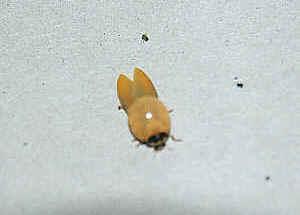
- The above picture is the Common Spotted Ladybird just hatched from its pupa. Its hind wings is still waiting to dry and not keep outside the wing-coves. The patterns on the forewings will appear a few hours later.
- Reference:
- 1. Ladybirds - Insects Identification and Information Guide, Australian Cotton CRC, 2004.
- 1. Ladybirds - Insects Identification and Information Guide, Australian Cotton CRC, 2004.


